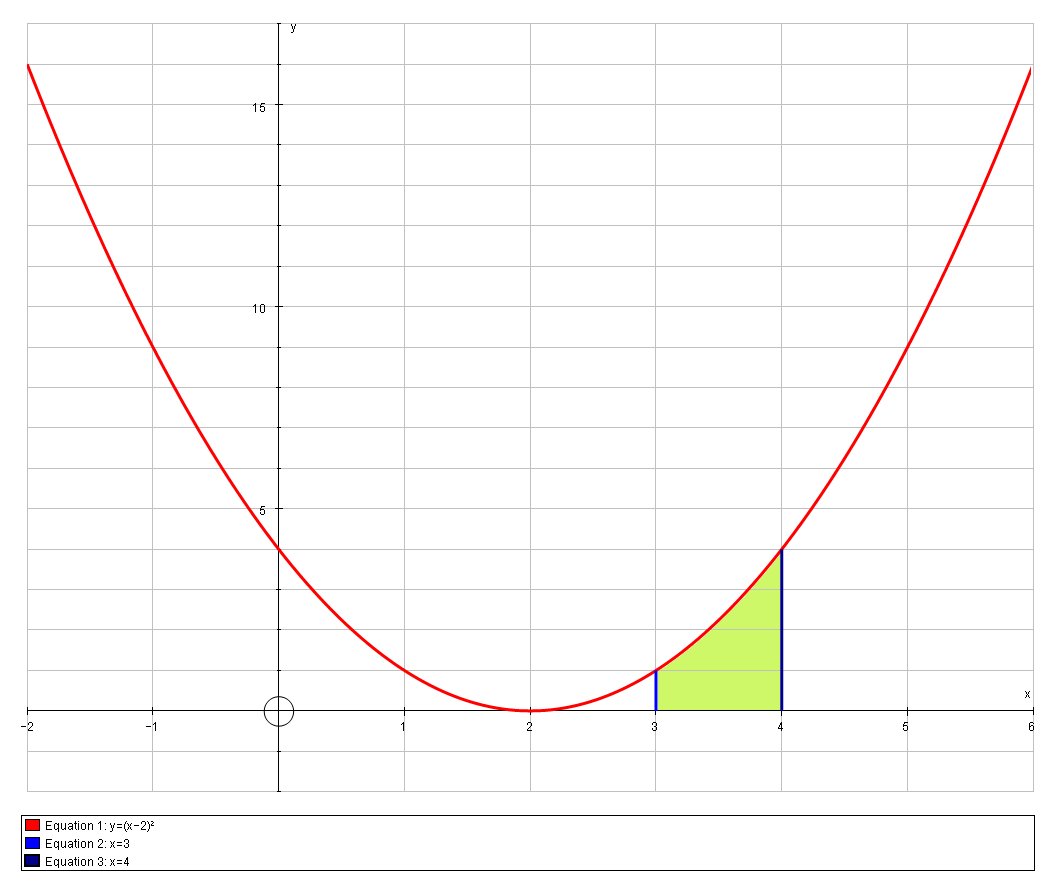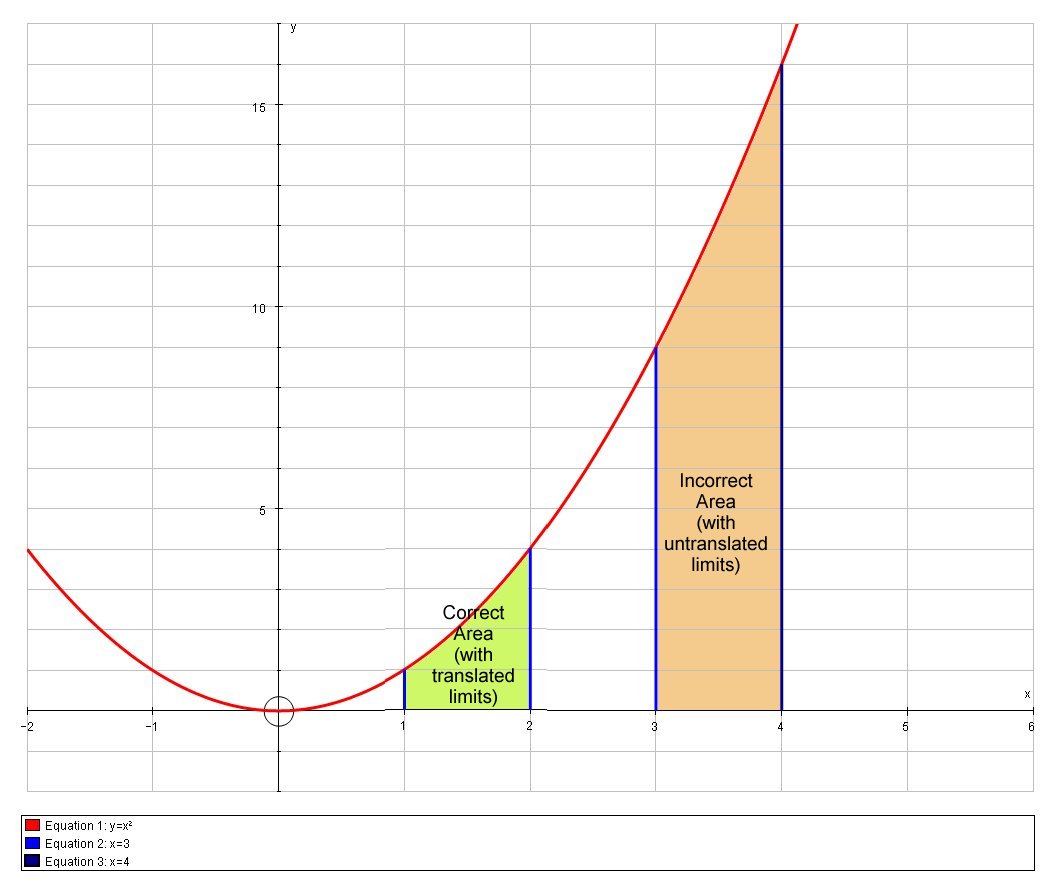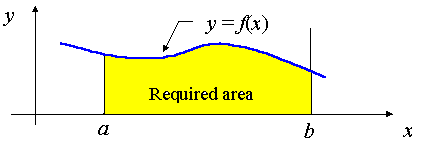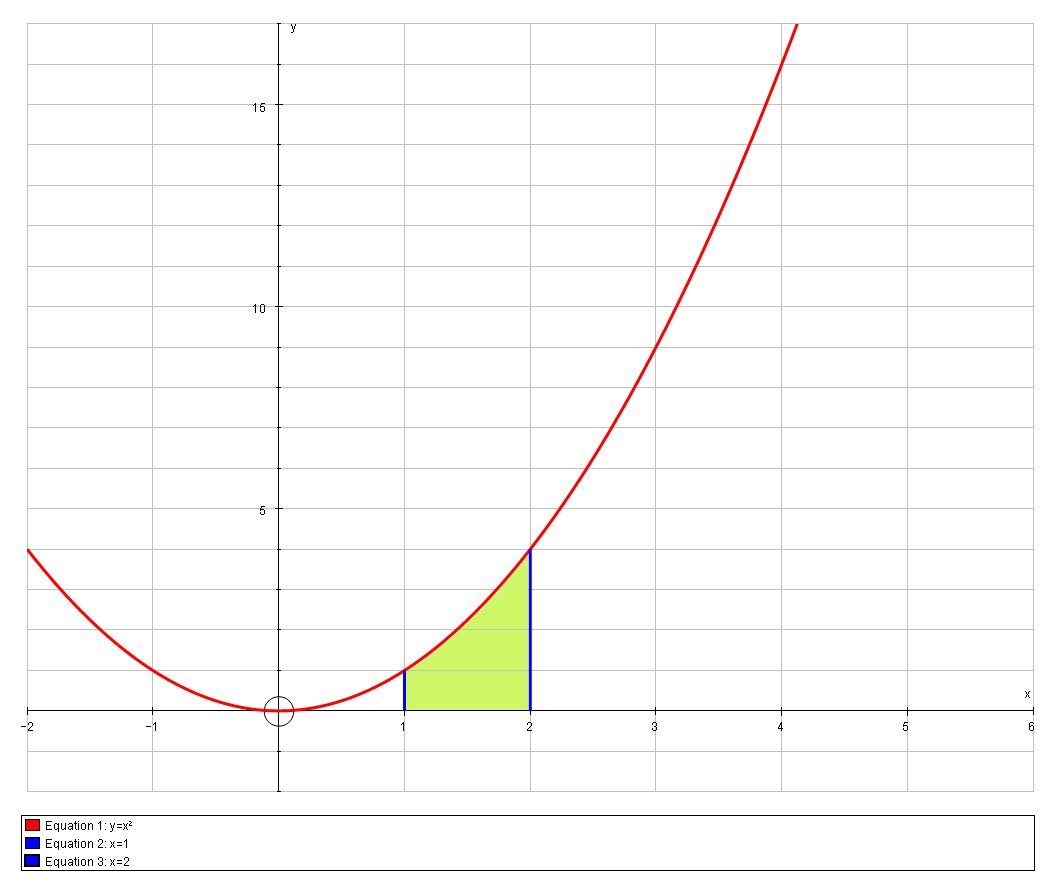Why do the limits of integration need to be changed if we perform a substitution?
1 Answer
Rather than expand one the given solution, I will demonstrate that why when we change variable via substitution we must also change the bounds of integration:
Consider first what an integral represents. The integral
I = int_a^b \ f(x) \ dx '
Is the same as the area under the curve
So now, let us consider a concrete example:
I = int_1^2 x^2 \ dx
Which is this area:
And, using our calculus of integration knowledge, we evaluate it as follows using the "power rule":
I = [ x^3/3 ]_1^2
\ \ = 2^3/3-1^3/3
\ \ = 7/3
Now, consider the following integral:
I = int_3^4 \ (x-2)^2 \ dx

This is the same curve as above, but translated two units, and represents the same identical area as above. We cannot apply the integration power rule to this integrand "as is" so we would typically (sometimes mentally) perform a substitution:
Let
u=x-2 => (du)/dx = 1
Then if we substitute and naively leave the limits of integration unchanged then we erroneously get:
I = int_3^4 \ (x-2)^2 \ dx
\ \ = int_3^4 \ u^2 \ du
\ \ = [ u^3/3 ]_3^4
\ \ = 4^3/3-3^3/3
\ \ = 64/3-27/3
\ \ = 37/3
The reason this fails is because the the translation of the curve via a substitution requires a translation of the limits of integration from

Wheres as when we also translate the limits of integration we get
x = { (3), (4) :} => u= { (1), (2) :}
Leading to the correct solution:
I = int_3^4 \ (x-2)^2 \ dx
\ \ = int_1^2 \ u^2 \ du
\ \ = 2^3/3-1^3/3
\ \ = 7/3



